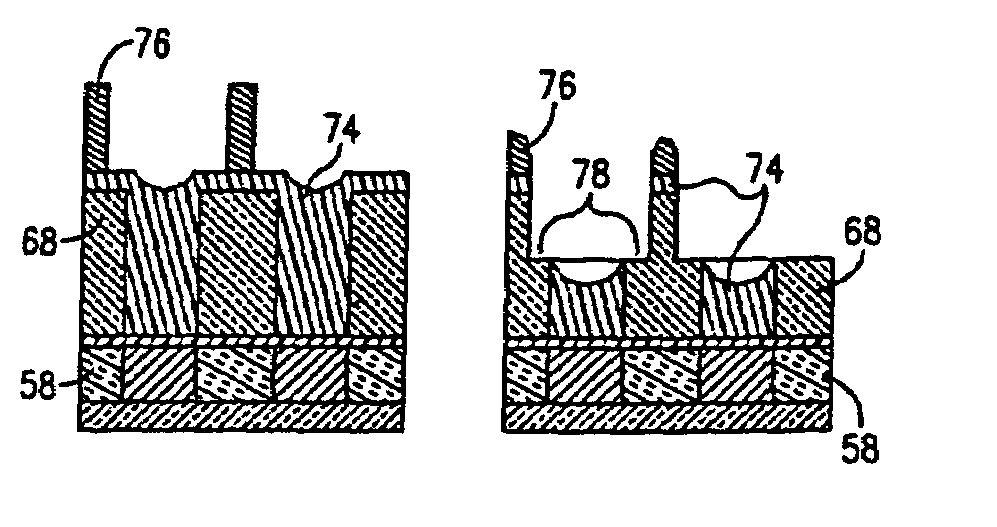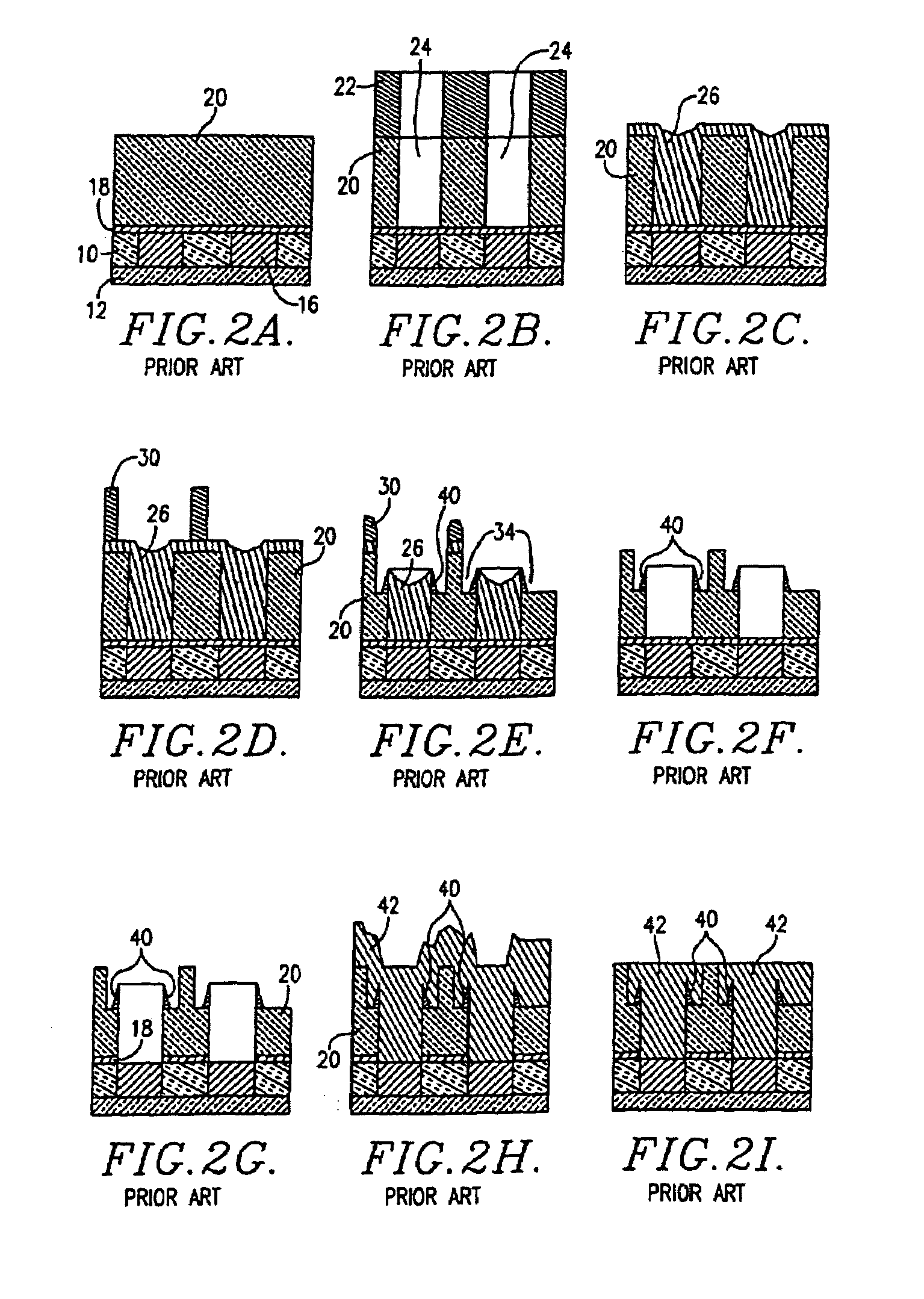Fill material for dual damascene processes
a filling material and damascene technology, applied in the field of fill compositions, can solve the problems of affecting the final circuit, the etch rate of the barc material , the failure of conventional barc material stripping compositions to remove the polymer,
- Summary
- Abstract
- Description
- Claims
- Application Information
AI Technical Summary
Benefits of technology
Problems solved by technology
Method used
Image
Examples
example 1
1. Copolymer Syntheses
[0107]Using a mantle for heating, the instant reaction was carried out in a three liter, 4-necked flask equipped with a mechanical stirring rod, thermometer, nitrogen inlet plus thermocouple, and a condenser having a nitrogen outlet. Under ambient conditions, the following compounds were charged: 13.59 g of glycidyl methacrylate; 25.25 g of hydroxyl propyl mrethacrylate; 1.17 g of 2,2′-azobisisobutyronitrile; and 1.17 g of 1-dodecanethiol in 158.83 g of PGME. The resulting solution was stirred under nitrogen for 15 minutes to remove oxygen, followed by stirring under nitrogen for 24 hours at 70° C. The heat and nitrogen were turned off, and the reaction mixture was allowed to cool to room temperature.
2. Mother Liquor Syntheses
[0108]Using a mantle for heating, the instant reaction was carried out in a three liter, 4-necked flask equipped with a mechanical stirring rod, thermometer, nitrogen inlet plus thermocouple, and a condenser having a nitrogen outlet. Under...
example 2
Preparation of Full Fill Via or Contact Fill Material
[0109]A via or contact fill material was prepared by mixing 27.62% by weight of the mother liquor prepared in Part 2 of Example 1 with 1.73% by weight Cymel 303LF (cross-linking material available from Cytech Industries, Inc.), 27.35% of PGMEA, and 43.3% by weight of PGME. The mixture was stirred for about 1 hour to give a clear solution after which it was exchanged for 15 hours with 7.24% (based on the weight of the mixture) of 650C exchange resin. The resulting mixture was then filtered through 2×0.1 μm (absolute) end-point filters. This material was coated onto two silicon wafers at a spin speed of 2500 rpm for 60 seconds followed by baking at 160° C. for 1 minute and then a 215° C. bake for 90 seconds. The resulting film had a thickness of approximately 1560 Å.
[0110]This composition was then applied by spin coating to two silicon wafers. The via fill material was static applied then ramped with an acceleration of 20,000 rpm / se...
example 3
Preparation of Partial Fill Via or Contact Fill Material
[0112]The material prepared above in Example 2 was diluted with PGME and PGMEA to produce a via or contact fill material which would provide a film of about 550–600 Å. This fill material was applied to two silicon wafers at a spin speed of 2500 rpm for 60 seconds, followed by a 160° C. bake for 1 minute and a 215° C. bake for 60 seconds to form a film having a thickness of about 590 Å, confirming that the material was properly diluted.
[0113]The diluted fill material was then spin-coated onto two silicon wafers with static application followed by an acceleration of 20,000 rpm / second to 2500 rpm which was held for 60 seconds. Both wafers were pre-baked at 160° C. for 60 seconds in contact hotplate mode. The thicknesses of the films on wafers 1 and 2 were 639 Å and 644 Å, respectively. The pre-bake thermal stability test was conducted on wafer 1. The film thickness after stripping was 0 Å. The film remained completely soluble afte...
PUM
 Login to View More
Login to View More Abstract
Description
Claims
Application Information
 Login to View More
Login to View More - R&D
- Intellectual Property
- Life Sciences
- Materials
- Tech Scout
- Unparalleled Data Quality
- Higher Quality Content
- 60% Fewer Hallucinations
Browse by: Latest US Patents, China's latest patents, Technical Efficacy Thesaurus, Application Domain, Technology Topic, Popular Technical Reports.
© 2025 PatSnap. All rights reserved.Legal|Privacy policy|Modern Slavery Act Transparency Statement|Sitemap|About US| Contact US: help@patsnap.com



